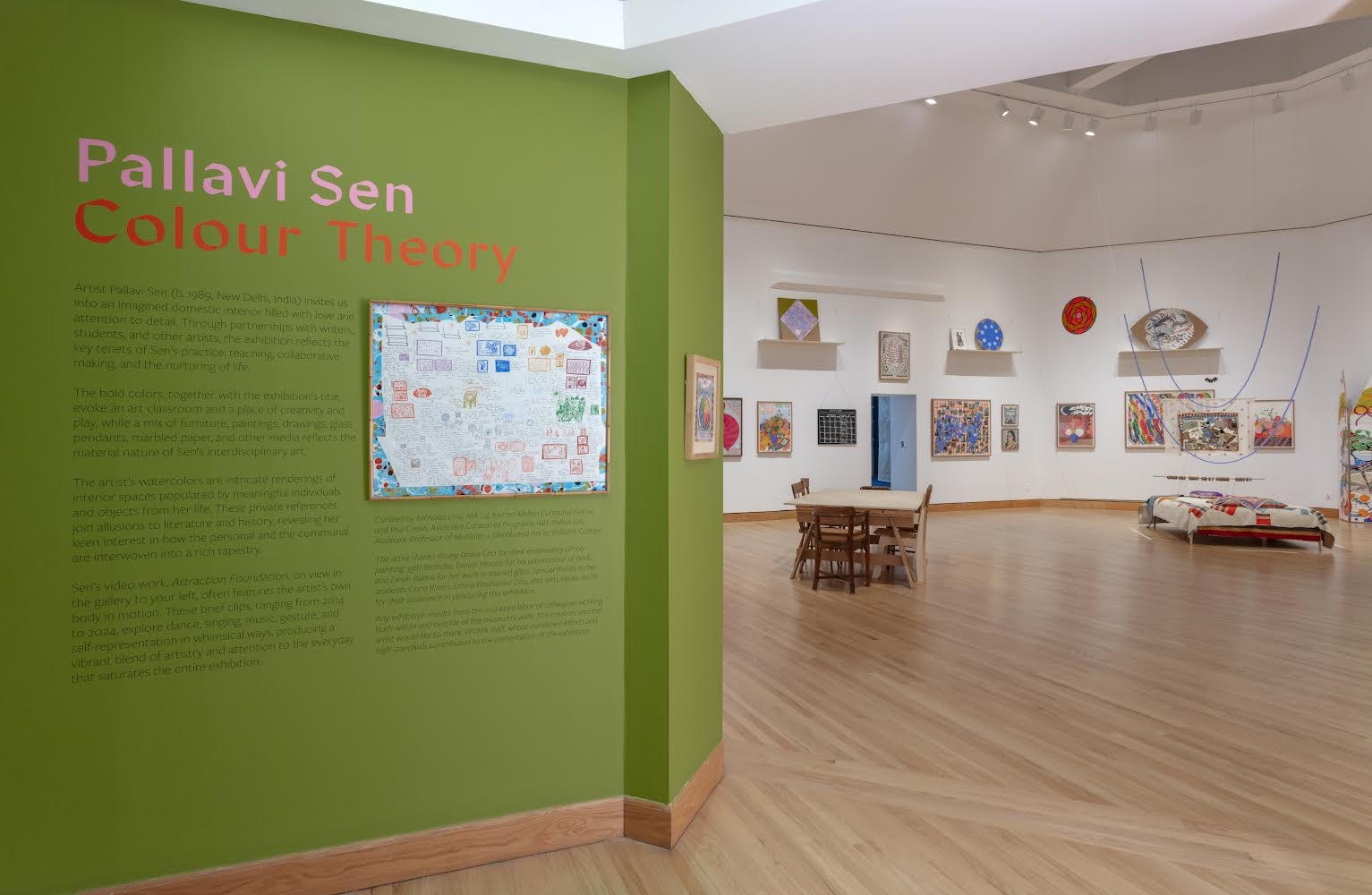
“The most meaningful part of the show is to show myself how fortunate I feel to be an artist,” Assistant Professor of Art Pallavi Sen said of her newest exhibition, “Pallavi Sen: Colour Theory,” which opened in the Williams College Museum of Art (WCMA) on Sept. 20. Co-curated by former Mellon Curatorial Fellow Nicholas Liou and Associate Curator of Programs at WCMA Roz Crews, the exhibition features Sen’s latest mix of multimedia art pieces.
Having grown up in Delhi and Mumbai, India, Sen’s work has been deeply influenced by how she experienced art in her home, where everything from the furniture to the curtains, windows, and toys was a handmade piece of artistry, she told the Record. “I grew up around a lot of very beautiful handmade objects and looking at all the incredible art and craft traditions of India,” she said. “It was not necessarily in the form of art … in the Western sense of art that you buy in a gallery but condensed into the house.”
“That really was my primary education, and art and design comes from that,” she added.
Sen explained that, inspired by her upbringing, she likes to think about how people personalize their spaces, both by hanging art on their walls and through their interactions with everyday objects. The exhibition’s physical organization, which displays a bed, shelves, and screens, intends to provide an intimate feel complementing the drawings and watercolors hung on the wall, she said. The exhibition was originally going to be more akin to an installation, featuring stages set with different scenes and sculptural work instead of wall-pieces, Sen explained. “Then slowly, I just became very excited about working on paper, and one drawing led to another, to another, and to another, but the whole space is still organized as a room,” she said.
Liou worked with Sen over the first year of the exhibition’s development. After completing his three-year fellowship, Crews took over the curation. “As the programs curator, I don’t typically work on exhibitions,” Crews explained, but because Sen and Crews are long time friends, it seemed natural for them to collaborate.
Crews worked closely with Sen to bring their joint vision to WCMA. Generally, curators work as a sort of accountability partner for the artists, but Crews also likes to think of it as something more nurturing. “The root of the word curator is ‘to take care of,’” Crews explained. “I think of it more like that. It’s more like a mother or a doula, where you’re sort of supporting the work to come to life.”
Any visitor will notice an atypical feature of the exhibition: None of the pieces have labels with titles or descriptions. According to Crews, the decision to omit labels was intended to leave the meaning of the piece open for interpretation. “If people know what each piece is about, it can be reassuring to know a fact, but if they don’t know, then they might more easily insert themselves into the narrative,” Crews said. “I think that can be a very powerful kind of experience with art — and maybe more similar to how children experience art. [Children] don’t have a fear of not knowing, so I guess there’s a desire for that childlike wonder, whimsy, and play in the show.”
Sen added that she believes labels could “inhibit the process of looking” and hopes that the exhibition’s lack of clarity will mirror real-world ambiguity. “There are so many things we experience in the world where there is not an immediate explanation next to it, but you see it and you understand it,” she said. “You find some kind of relationship to it, or you look closer, and then you try to make sense of it.”
Several of the art pieces are collaborations between Sen and other artists, including some students at the College. Many students helped create shelves, stained glass, and quilts or helped choose frames for Sen’s pieces.
The exhibition’s title reflects the artistic freedom that Sen intended to convey through her work. “I sometimes feel upset when people feel like some colors don’t go together,” she said. “Theories of color can be so context-specific, based on the material world that you grew up in … and so in the same way, you can train your eye to like certain things that you could not like before. I especially feel like people who don’t regularly practice art or regularly deal with materials can be a little tentative or scared to make these decisions.”
“I do always ask my students, whenever we’re working in the print shop, to come up with their own colors, make their own colors, so that we can confront an artwork that only they could have made and nobody else,” Sen continued.
“Pallavi Sen: Colour Theory” will be on display at WCMA until Dec. 22. WCMA will host a talk with the co-curators and Sen on Oct. 25 at 6 p.m. The curators will also lead a walk-through of the exhibition on Oct. 26 at 11 a.m.








